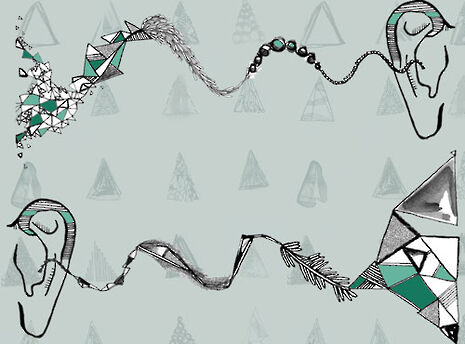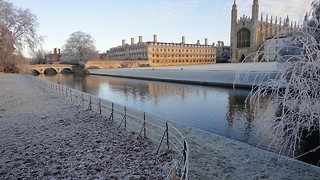Modes of listening
Sound art is undergoing a vogue of late. Lawrence Dunn exposes some of its facets and explores contemporary practitioners.
Sonic art has become rather fashionable. Last year, the Turner prize was awarded, for the first time, to a piece that used sound exclusively. Susan Philipsz’s Lowlands was originally installed beneath three bridges over the Clyde in Glasgow, and featured her own voice in layered waves of medieval song [listen]. Turner prize’s interest in sonic art is a change in fashion, a sign of reorientation on ten he part of the art establishment, and not without a feeling of guilt. Curators have, for years, struggled to find homes for the output of many artists.

Philipsz’s solution was to find outside spaces in which to exhibit – a convenient approach considering the public art world’s increasing interest in outreach. Besides most modern art galleries are uncomfortable and inadequate listening spaces. Yet, many artists feel that their work doesn’t fit a concert hall environment, and is inappropriately described as music. As sound art, however, her work has a rich pedigree.
Though the term ‘sound art’ was only coined in the early 1980s, its origins stretch back to the Italian Futurists, specifically Luigi Russolo, who perplexed audiences with his Intonarumori, or ‘noise-machines’. He first performed with these machines in 1913, and published his manifesto ‘The Art of Noises’ [listen]. His sound work was heard by Stravinsky, Diaghilev, Ravel and Mondrian [listen].
Developments in the artistic appreciation of sound continued in fits and starts after the Second World War, with the opening of radiophonic studios in Germany, France and Britain. In Paris, Pierre Shaeffer pioneered Musique Concrète, music composed on tape using ‘real’ (i.e. recorded) sound. In the 1960s and 70s, American experimental composers such as Alvin Lucier [listen], Pauline Oliveros [listen] and Robert Ashley [listen], following in the wake of John Cage, began to adopt a more robustly interrogative approach to sound.
Contemporary sound art practice has developed slowly and (not without irony) rather quietly. Our contemporary art world in this country is dominated by the Young British Artists, whose work is often brash and audacious. Artwork that is expansive, quiet, or contemplative, as is much current sonic work, is easily overlooked.
A good example is Max Eastley, whose kinetic sound sculptures are often extremely delicate [listen]. Eastley’s practice is contrasted by the more technocratic – but no less delicate – work of Swiss artist Zimoun [listen].
Like Zimoun, French artist Céleste Boursier-Mougenot’s installations often rely on repetition of small individual elements. His well-attended at the Barbican last summer featured many cuddly zebra finches playing electric guitars exhibit [listen].
Phonography, or the art of field-recording, is an intriguing side to sound art practice. The record label and/OAR [listen] specialises in it, and there is also a radio show called Framework dedicated to it and features the work of Lee Patterson [listen].
Framework is broadcast on Resonance 104.4FM, a London radio station (broadcasting over the internet as well) which is the home of much of the most exciting sound work being done [listen ]. There is also a tiny new gallery in Tottenham, Soundfjord dedicated to exhibiting sound work [listen]. You can read my review of their latest exhibition, Rie Nakajima’s I Can Hear It, here [listen].
There is a wealth of fascinating sound work out there, and this survey just scratches the surface. Like the best music, it takes time and energy to listen to it. But it is full of contemplation and investigation, and there is an air of modesty about many sound artists working today – a modesty often lacking in other corners of the art world.
Other links:
Sound and Music [listen]
British Library Sound Archive [listen]
Sound Art Resources from Southampton Uni [listen].
 Comment / Anti-trans societies won’t make women safer14 November 2025
Comment / Anti-trans societies won’t make women safer14 November 2025 Fashion / You smell really boring 13 November 2025
Fashion / You smell really boring 13 November 2025 Features / Beyond the Pitt Club: The Cambridge secret societies you have never heard of16 November 2025
Features / Beyond the Pitt Club: The Cambridge secret societies you have never heard of16 November 2025 News / Pembroke flood damage forces ‘costly’ repairs17 November 2025
News / Pembroke flood damage forces ‘costly’ repairs17 November 2025 News / University opens new sports pitch15 November 2025
News / University opens new sports pitch15 November 2025









